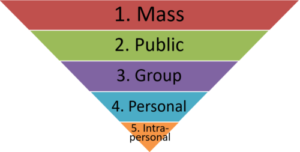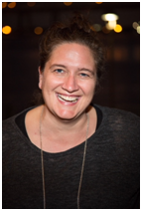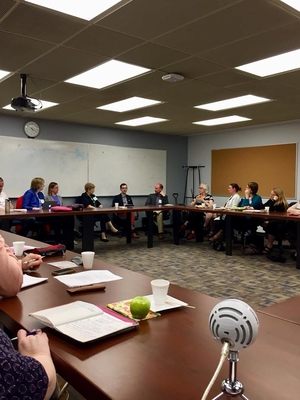In November 2018, members of Orchestras Canada’s Advocacy Committee met with their Members of Parliament to deliver a united message for Canadian orchestras. These meetings were the first phase of an ambitious effort to engage as many of you as possible in meeting with your MPs to share collective messages about the value of orchestras, and the importance of enlightened federal policy and funding programs.
Following this, we asked representatives from Canadian orchestras coast to coast, to request face-to-face meetings in their riding with their MP or MPs during the 2018-2019 Parliamentary break.
The following is a list of materials that can be useful in requesting, preparing for, holding, and following up from a meeting with your elected representative.
To Request a Meeting
- If you don’t know who your MP is, follow this link and scroll down to the “find” function, and enter your postal code.
- Check our master spreadsheet of all MPs, so you can quickly identify which MPs have already met with orchestra representatives. If you have a choice, please do request a meeting with an MP who are not yet “claimed”. We’d like the messages to be delivered TO as diverse a group as possible, BY as diverse a group as possible.
- Customize our template meeting request and send it to your MP, either by email or to the constituency office address listed on our master spreadsheet.
Meeting Tools & Materials
In this folder, you will find a range of useful advocacy tools and materials, tested by our intrepid advocacy committee when they met with their elected officials in November. To prepare thoroughly for your meeting, we encourage you to read through what’s inside:
- To request a meeting, you can use this template letter.
- To inform yourself beforehand, read through this leave-behind document and OC’s latest submission to the Standing Committee on Finance.
- During the meeting, you can use the meeting script we have developed, as well as our Social Media Guide so that OC and other participants can amplify your message. Here are some other tips to keep in mind during your meeting.
- After the meeting, make sure to thank your MP, and to let Orchestras Canada know of any feedback by sending us this form.
Advocacy Webinar
On January 17th, 2019, Orchestras Canada’s government relations advisor Micheline McKay discussed the process of setting up, preparing for and holding a meeting with your elected representative, and took questions on this year’s messages. You can access the recording here upon supply of a name, email address and organization. The corresponding slide deck is available here.

 Mass Communication: information transmitted to multiple people at the same time, such as print, web, radio or television advertisements, blogs, websites or podcasts.
Mass Communication: information transmitted to multiple people at the same time, such as print, web, radio or television advertisements, blogs, websites or podcasts. It doesn’t take a huge organization to use data effectively. Whatever resources you have, with the right data you can personalize your communications, and engage with people in ways that acknowledge their interests and values. Demonstrate empathy. For example, if a patron has only attended past concerts featuring piano soloists, they will likely appreciate learning about the all-Chopin extravaganza you have coming up. If they’re always at your afternoon concerts, then perhaps they should be direct-mailed about next month’s matinee rather than being telemarketed at dinner-time about subscribing to your evening concert series.
It doesn’t take a huge organization to use data effectively. Whatever resources you have, with the right data you can personalize your communications, and engage with people in ways that acknowledge their interests and values. Demonstrate empathy. For example, if a patron has only attended past concerts featuring piano soloists, they will likely appreciate learning about the all-Chopin extravaganza you have coming up. If they’re always at your afternoon concerts, then perhaps they should be direct-mailed about next month’s matinee rather than being telemarketed at dinner-time about subscribing to your evening concert series. Users: Visitors to your website.
Users: Visitors to your website. Find out who your current audience is:
Find out who your current audience is: See how they’re finding you:
See how they’re finding you: Find out where they’re spending their time:
Find out where they’re spending their time:


 1. You can’t count on people to look for you on Social Media. Your followers are busy, and often don’t have time to search for you on Facebook, Twitter or Instagram. And of course you want new people to notice you and start following. You need to be present and post regularly, whatever that might mean for your organization. Join groups likely to be interested in your programs and post there too where relevant.
1. You can’t count on people to look for you on Social Media. Your followers are busy, and often don’t have time to search for you on Facebook, Twitter or Instagram. And of course you want new people to notice you and start following. You need to be present and post regularly, whatever that might mean for your organization. Join groups likely to be interested in your programs and post there too where relevant.